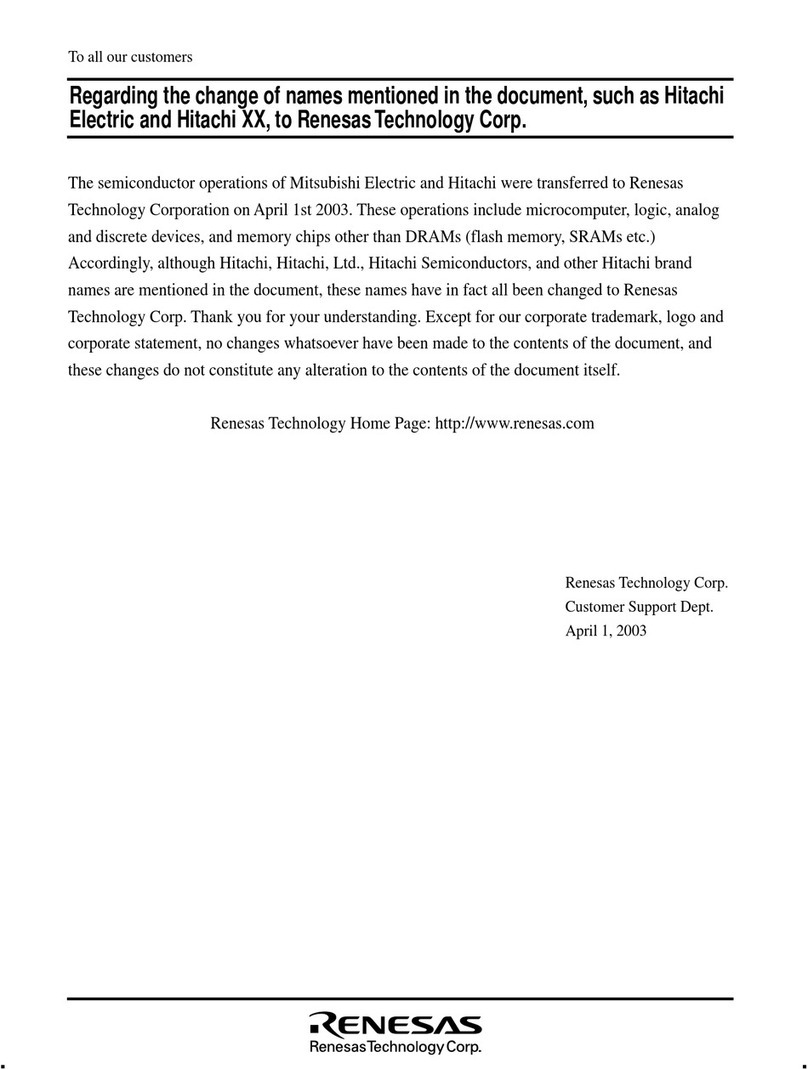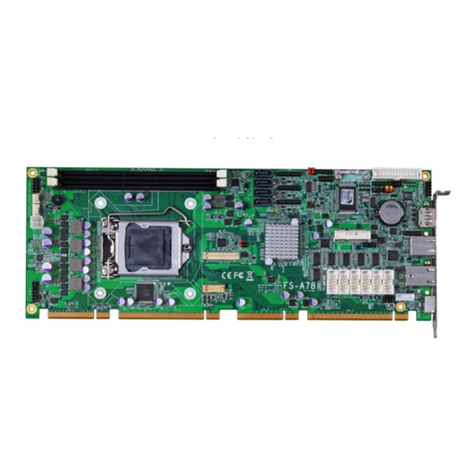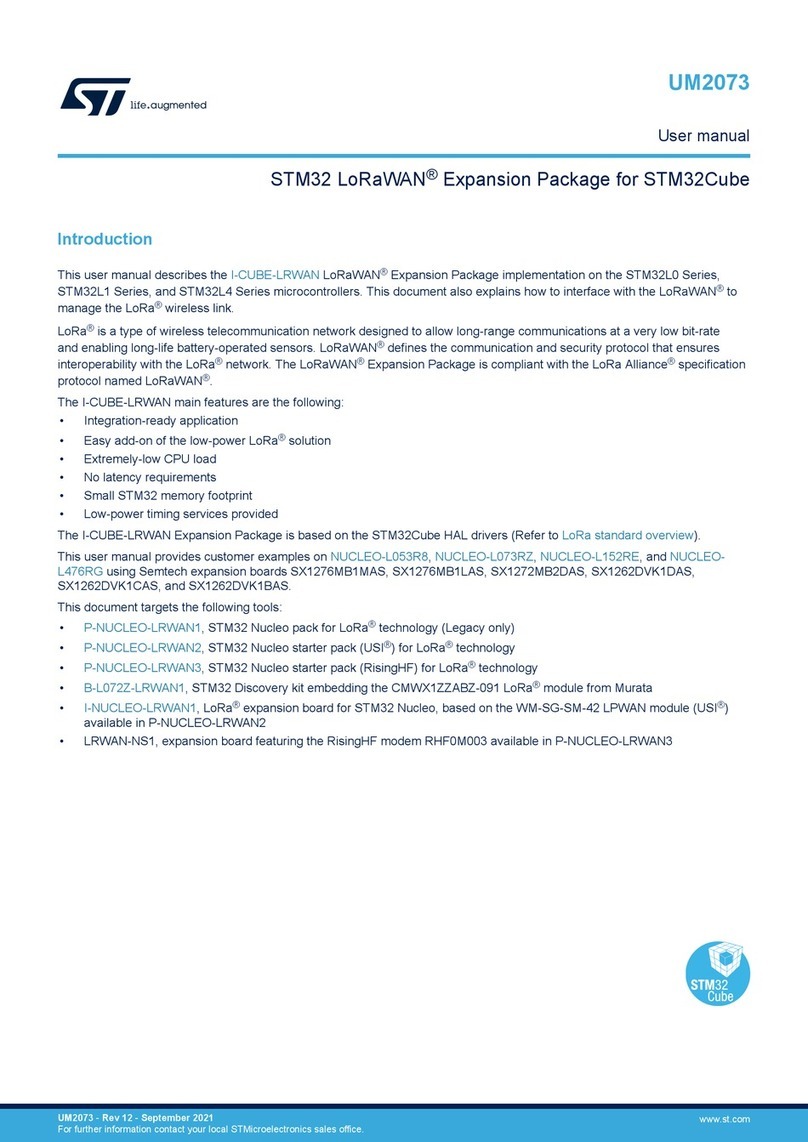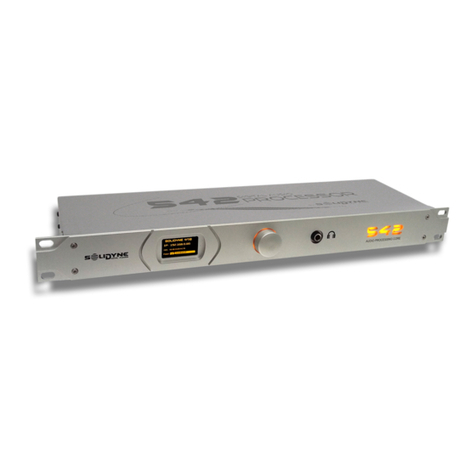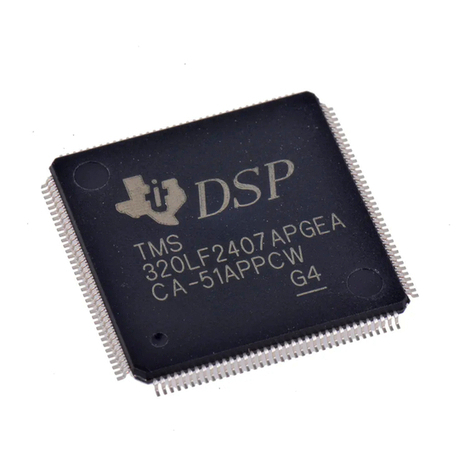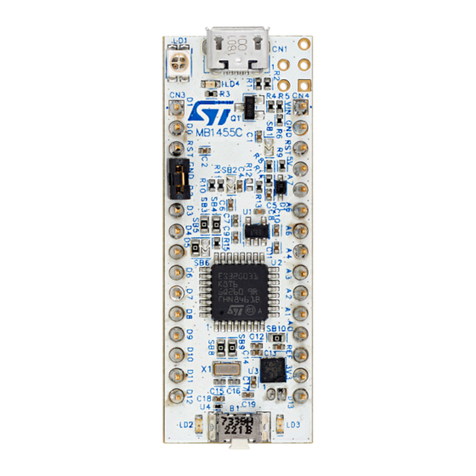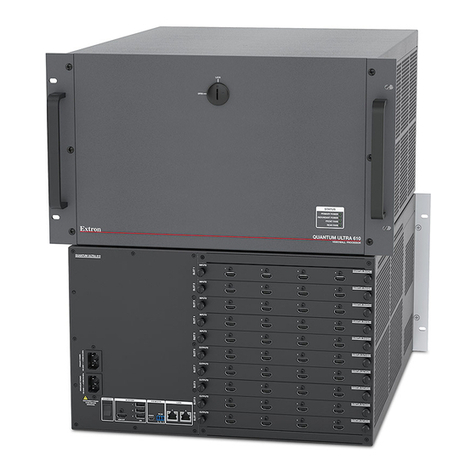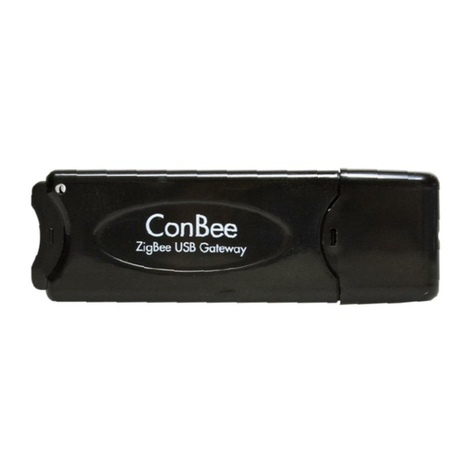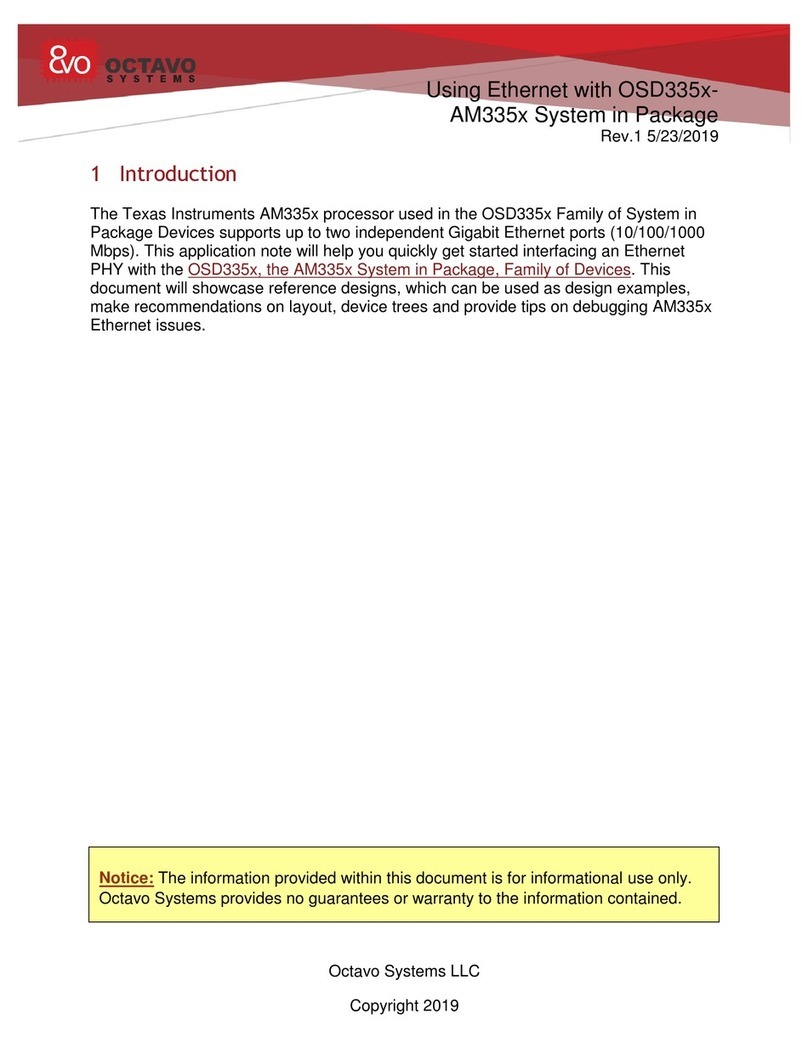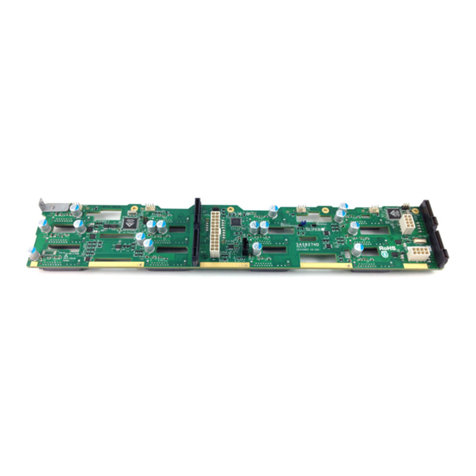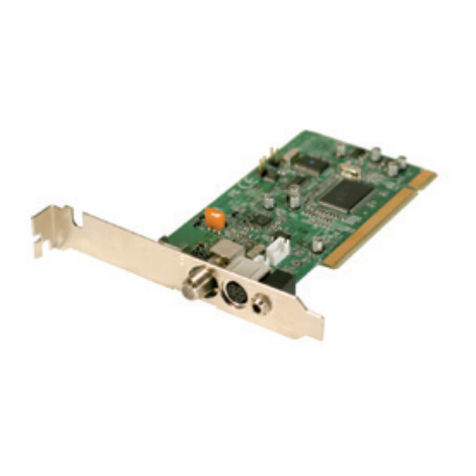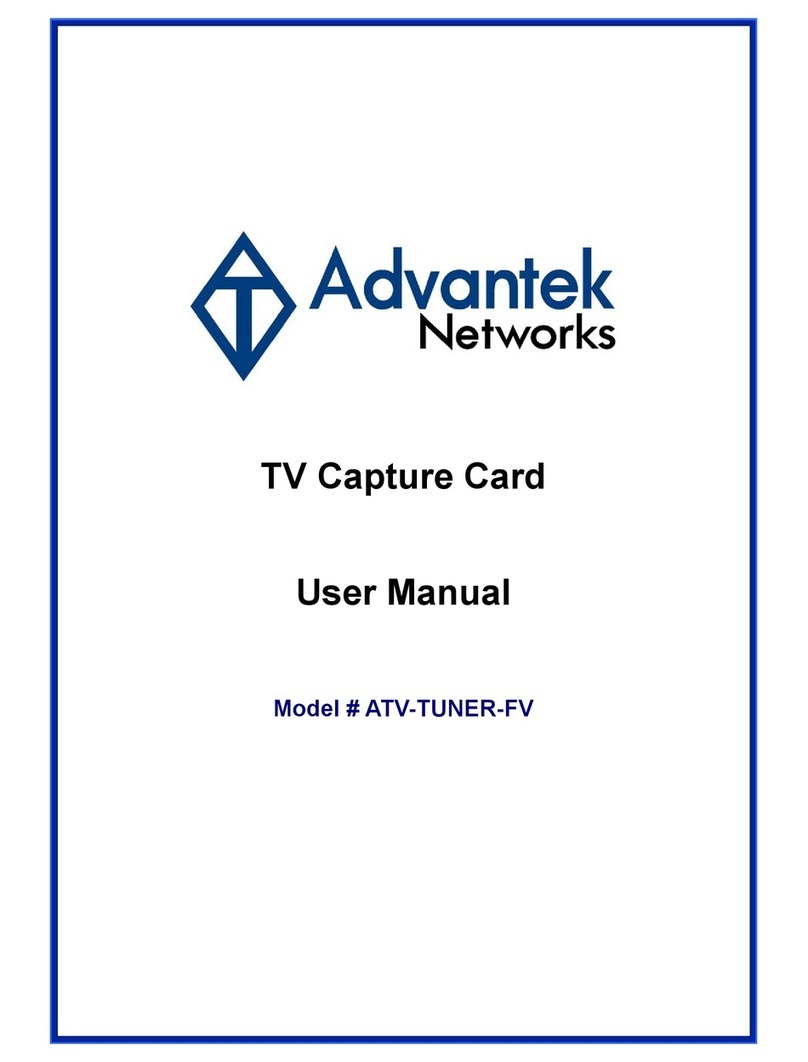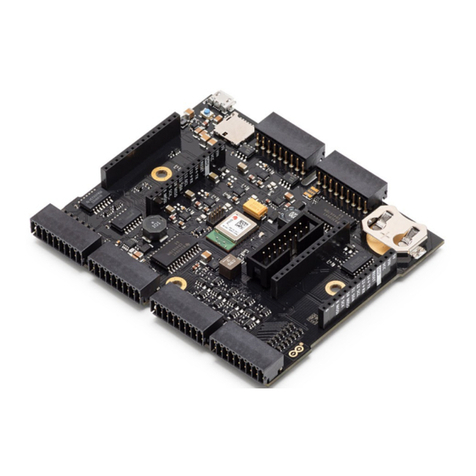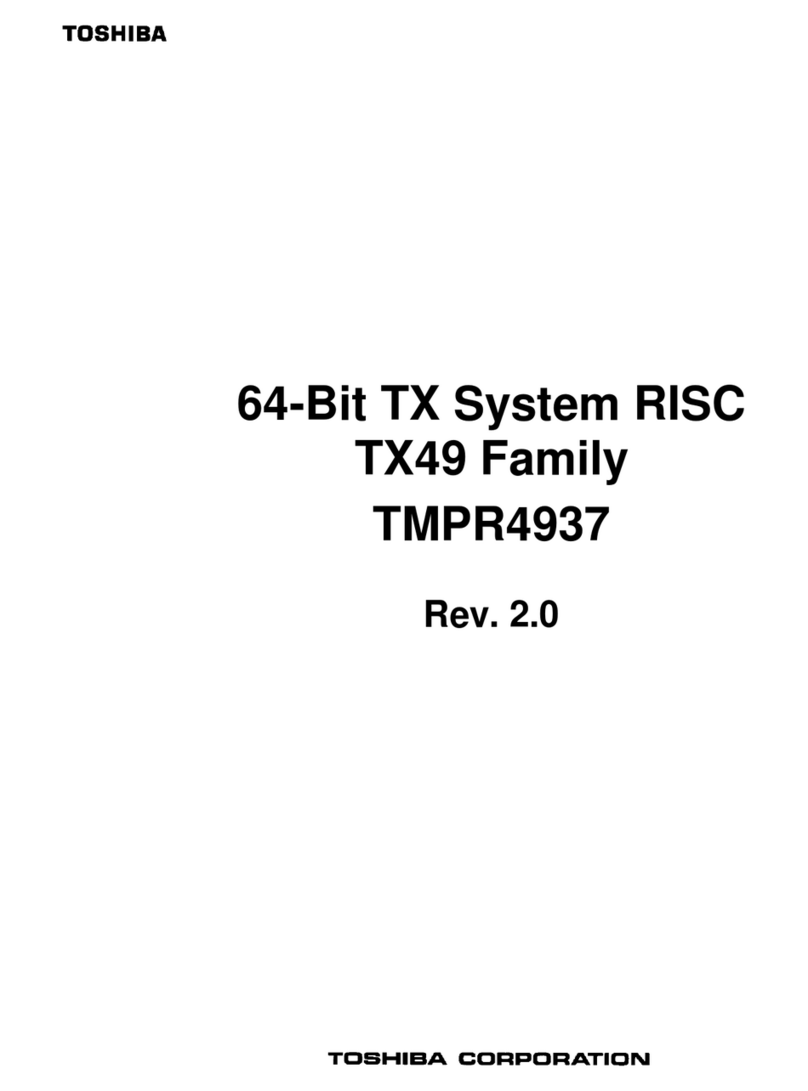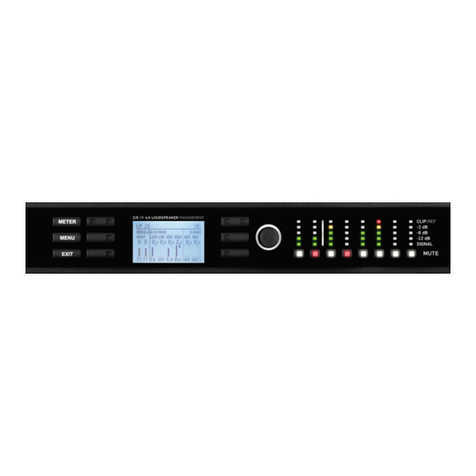Desin Instruments HS-7000 Series Instruction manual

GENERAL
INSTRUCTIONS
HS-7000 SERIES
MULTIVARIABLE
CONTROL
PROCESSORS
PAC
HS-7500
HS-7300
HS-7200
PROGRAMMABLE BY
FUNCTION
BLOCKS
PARAMETRIZATION
AND
CONFIGURATION BY
KEYPAD

2
GENERAL INDEX
HS-7000 SERIES OPERATION INSTRUCTIONS ............................................................ 5
BASIC RECOMMENDATIONS ...................................................................................... 6
INTRODUCTION ......................................................................................... 6
Check packing contents ............................................................................ 6
Considerations about these instructions ................................................... 7
Structure of these instructions .................................................................. 7
Complete menu of models with display ..................................................... 7
HS-7000 Series Description ...................................................................................... 8
Description ......................................................................................... 8
Formats ......................................................................................... 9
Identification ....................................................................................... 10
INSTALLATION ....................................................................................... 11
Mounting precaution ............................................................................... 11
Mounting, Dimensions and panel cutout.................................................. 11
WIRING ....................................................................................... 12
Wiring precautions .................................................................................. 12
Description of terminals .......................................................................... 14
DESCRIPTION OF FRONT PANEL .............................................................................. 18
OPERATION INSTRUCTIONS OF MAIN MENU FUNCTIONS .......................................... 21
GENERAL INSTRUCTIONS ....................................................................................... 22
Initial presentation of the Display ............................................................ 22
Messages of safety functions ................................................................. 23
OPERATION OF MAIN MENU FUNCTIONS .................................................................. 24
CONTROL SETPOINTS SP 1, SP 2, AND SP 3 .......................................... 24
REMOTE SETPOINT SP r .......................................................................... 25
RAMP SETPOINT ..................................................................................... 25
AUTO-MANUAL STATIONS AM 1, AM 2 AND AM 3 .................................... 27
ALARM SETPOINTS AL 1, AL 2, AL 3, AL 4, AL 5 AND AL 6 ..................... 28
AUXILIRY SETPOINTS STR 1, STR 2, STR 3 AND STR 4 ........................... 30
PASSWORDS ....................................................................................... 31
PID CONTROL SUBMENU ....................................................................................... 32
Input to PID 1, PID 2 and PID 3 ............................................................... 32
PID Autotuning (AUTOTUNING) ................................................................. 33
Fuzzy-Logic ....................................................................................... 36
PID Manual Settings ............................................................................... 37

3
OTHER MANUAL CONTROL SETTINGS ...................................................................... 39
RS-485 Modbus Communications ............................................................................ 40
OPERATION INSTRUCTIONS OF SPECIFIC FUNCTIONS ..................................................... 41
MAIN APPLICATIONS ....................................................................................... 42
General purpose basic Indicator .............................................................. 43
Indicator with automatic or manual Tare .................................................. 45
Indicator with instant, peak or valley Hold ............................................... 46
Psychrometric %RH Indicator ................................................................... 47
Pulse Counter ....................................................................................... 48
Frequency-meter ..................................................................................... 50
Period-meter ....................................................................................... 50
Derivator ....................................................................................... 51
Integrator Totalizer .................................................................................. 52
MODBUS Communication ........................................................................ 53
Continuous Control by current modulation ............................................... 54
Discontinuous Control by time modulation ............................................... 55
Step by Step Control ............................................................................... 57
Controller Positioner ............................................................................... 62
Bimodal (Heat- Cool) Control ................................................................... 63
Remote Setpoint Controller ..................................................................... 64
HS-7000 SERIES BASIC CONFIGURATION USING KEYPAD............................................... 65
GENERAL CONFIGURATION SYSTEM ....................................................................... 66
PARAMETERS MODIFICATION PROCEDURE .............................................................. 68
Analog Input Configuration ...................................................................... 69
Analog Output Configuration .................................................................... 76
Digital Output Configuration (Relays) ....................................................... 78
Analog HOLD, Peak or Valley ................................................................... 80
Analog Integrator .................................................................................... 82
Analog Derivator ..................................................................................... 85
Timers ....................................................................................... 86
Linearization ....................................................................................... 88
Analog Alarms ....................................................................................... 91
PID Control ....................................................................................... 93
Control Setpoint SP ................................................................................ 96
Displays ....................................................................................... 98
Access passwords to Submenus (Password) ........................................... 99
CONFIGURATION OF OTHER FUNCTIONS OF HS-7000 ................................................... 100
TABLE OF CODES OF ANALOG FUNCTION BLOCK OUTPUTS ........................................... 102
TABLE OF CODES OF LOGIC FUNCTION BLOCK OUTPUTS .............................................. 103

4
This page has been left blank intentionally.

5
HS-7000 SERIES
OPERATION
MANUAL
VERY IMPORTANT
Some explanations are related specifically to the models
provided with front keypad.
For the HS-7500 Processor (w/out keypad) it is necssary to
use the LoopWin Software.
HS-7300
HS-7200

6
Please read carefully
before handling
the instrument
INTRODUCTION
CHECK PACKING CONTENTS
Should includes:
- 1 HS-7000 device.
- 2 Clamps to fix to panel (except for the converter HS-7500).
- 1 Instruction sheet.
- 3 Shunts 3,74 Ohm for mA inputs.
- 1 CJC Sensor for thermocouple Cold Junction Compensation.
Optional: In special under request models, may include:
- 1 Input Voltage Divider (for input signals greater than 75 mV).
- 1 Adapter for feedback potentiometer input.
- 1 General Instruction Manual.
- 1 CD including software and LoopWin and Proasis DCS-Win utilities.
- 1 Advanced Instruction Manual.
BASIC RECOMMENDATIONS
This Manual is addressed to the instrumentist responsible of programming and configuration and
start-up of these instruments.
NOTE: These instruments are provided, from factory, with protection level allowing the access
to the display parameters. The access to the submenus is protected with Passwords, to avoid
any misuse which may alter the configuration already stored in memory.
These INSTRUCTION MANUALS are continuously improved
by our publication’s department, generating updated
versions in PDF format available on our website:
www.desin.com

7
CONSIDERATIONS ABOUT THESE INSTRUCTIONS
●
The instruments of the HS-7000 Series are fully programmable processors, so that, all the
function provided in its Function Blocks can be enabled or disabled by key pad or by software,
to fit the application requirements. The Function Blocks of the HS-7000 can be linked to each
other, allowing infinity of control structures to fit almost every application.
●
This feature makes the menu in the HS-7000 Series to be non-linear one, so that it is
impossible to explain how it operates following the pre-established structure of menu.
●
Moreover, these functions represented as symbols on the display, can be assigned to any
of the three loops or to any Password level available in the instrument, so that it can be
located, in the menu, in different positions according to the programmer and the application’s
requirements.
●
This is why the display of the HS-7000 is different from other displays, since it can display
between 6 and 15 different values by multiplexing the screens on the display. These screens
are identified and presented as Meauring or Control Loops L1, L2 and L3, to which, can be
assigned any measured or calculated signal. Every loop can be selected by using the key
from any position of the MAIN MENU.
●
Thus, in the HS-7000, one display may shows the one input signal, the other one the Total
of a flow measurement and the third one may displays a hold value, or one setpoint, or the
control output value, etc.
●
Those instruments, because of its versatility, performances, accuracy and fast response are
considered as high range instruments of its segment.
The operation instructions are organized in different sections to ease the operation of
Parameterization, Configuration and Specific Applications, as follows:
STRUCTURE OF THESE INSTRUCTIONS
These instructions are structured in different sections:
INSTRUCTIONS FOR WIRING, MOUNTING AND CONTROL KEYPAD
●
Inputs, Outputs, Displays and Keypad.
OPERATION OF FUNCTIONS OF MAIN MENU
●
SP, A/M, Alarms, Auxiliary Setpoints, Integrator, Counter, Hold, PID, Communications, etc.
SPECIFIC APPLICATIONS OF SOME OF MAIN FUNCTIONS
●
Indicator types, Counter, Frequency, Type of Controllers, Special models, etc.
BASIC CONFIGURATION BY KEYPAD OF MAIN FUNCTIONS
●
Allows, without using the LoopWin software, using the keypad to modify the most common
functions of the HS-7000 Series such as: Input, Output, Hold, Integrator, Derivator, Timers,
Linearizers, Alarms, PID, Setpoint SP, Password
COMPLETE MENU OF MODELS WITH DISPLAY
For any model of HS-7000 with display, with all its functions enabled, and indistinctly of the
assignation to the dispaly, or in which Loop or Password the function is located, when the key

8
HS-7000 SERIES DESCRIPTION
DESCRIPTION
The HS-7000 Series is a new range of programmable Multivariable Control Processors.
Each model of this series is provided with:
●
2 Analog inputs for TC, Pt 100 and mV or mA. (Note: Only one input could be used for TC)
●
1 Analog input for mV or mA
●
2 Analog outputs mA, for control or signal retransmission
●
2 Logic inputs 24 V, (1 for counting and 1 function activation)
●
4 Relay or Logic outputs for the activation of exteranl elements
●
2 RS-485 communication ports
●
1 Transmitter power supply output, 24 Vdc 60 mA.
Its 56 Function Blocks, could be linked allowing infinity of measurement and control strategies.
●
3 Analog input blocks
●
2 Analog output blocks
●
3 PID bimodal control blocks
●
3 Independent Setpoint blocks
●
6 Alarm loops
●
4 Digital output blocks
●
2 User Linearization blocks
●
1 Integrator block
●
2 Derivator blocks
●
1 Pulse counter up to 2,5 Khz
●
1 Logic input block
●
4 Configurable Timers
●
4 Analog constants wih decimals and 4 integer analog constants
●
1 Hold function instantaneous, Peak or Valley
●
4 Arithemtic Blocks each one is provided with square root extraction, 4ºPolynomials,
Psychrometric function, etc.
●
6 Logic operators And, Or, Xor, Set-Reset and Flip - Flop
●
2 Selectors of analog signals
●
2 Remote Logic input / output blocks
●
3 Configurable Display blocks
●
1 Front panel LED block

9
FORMATS
This Series is presented in 3 different formats, provided with the same functions, the only
difference between the models is the format.
HS-7200 1/8 DIN Horizontal Indicator, with dual 6 and 4-digit
display respectively. Suitable for displaying
measured and calculated variables.
HS-7300 1/8 DIN Vertical Controller, with 3 x4-digit display.
Suitable for multivariable process control.
HS-7500 DIN Rail mounting processor, without display and
keypad format.
Suitable remote multivaraible control from PC.
The HS-7200 and HS-7300 could be programmed from front keypad or from PC using the
LoopWin Programming Tool Software.
The HS-7500 can only be programmed by LoopWin, since it is not provided with keypad.
These devices are provided with 2 independent RS-485 ports, having same address and
communication speed rate to be Controlled, conneced to a Modbus terminal in the field, and
at the same time, Supervised by the Proasis DCS-Win or Proasis LAN-Win software as well as
by any other SCADA software Modbus compatible.
These instructions describes models provided with factory standard configuration. Modifications
could be done by the user by LoopWin or keypad, depending on the model used.
STANDARD CONFIGURATIONS:
HS-7200 3 mV or mA inputs (2 configured as TC and Pt 100); with 6 alarms and 4 relay
outputs, and 2 signal retransmission 4-20 mA outputs.
HS-7300 3 mV or mA inputs (2 configured as TC and Pt 100); with 3 PID loops, 6 alarms and
4 relay outputs, and 2 control 4-20 mA outputs.
HS-7500 3 mV or mA inputs (2 configured as TC and Pt 100); and 2 signal retransmission
4-20 mA outputs.
NOTE: Only one of the two inputs is used for TC input, since the second one is used for CJC (Cold
Junction Compensation using a Pt 100).

10
is pressed, the access to the following options is allowed.
MNEMONIC DESCRIPTION INSTRUCTION
SP 1...3 Control Setpoint of each PID loop General
AM 1...3 Auto-Manual station of each PID loop General
di 2 Frequency-meter and Counter Specific
Int Integrator Specific
HLd Hold function Specific
AL 1...6 Alarm setpoints and hysteresis General
Str 1...4 Auxiliary setpoints (constants) Specific
PASS Access to menus of PID, Configuration and Calibration General
PID 1...3 PID Control loops. Parameters and control capabilities General
NOTE: The Menu configuration could be modified by LoopWin software, or by front keypad, to
fit the process structure.
VERY IMPORTANT:
●
If the HS-7000 were purchased with special programming or non programmed, refer to
ADVANCED PROGRAMMING INSTRUSTIONS.
●
If the HS-7000 were purchased with standard programming, refer to the OPERATION OF
FUNCTIONS OF MAIN MENU.
IDENTIFICATION
The instrument is identified by an adhesive label located on one side of the device. A marked boxes
allow to know: MODEL, INPUT (signal type) and RANGE in addition to, other informations useful for
maintenance .
These instruments are, usually, delivered with factory standard configuration.
HS-7000 SERIES FACTORY STANDARD CONFIGURATION
- Analog input 1: .................................................................................. Thermocouple «K»
- Analog input 2: ................................................................................................... Pt 100
- Analog input 3: ........................................... 0 - 75 mV or 4-20 mA with shunt 3,74 Ohm
- Range: .............................................................................................................. 0/1200
- Decimals: .................................................................................................... No decimal
- Unit: ......................................................................................................................... °C
- Analog outputs................................................... 4-20 mA. Control and Retransmission
- Logic inputs: ..................................................................................... To be programmed
- Digital outputs ...................................................................... 4 Relays. To be assigned
- Passwords: ................................................................................. 0123 in all passwords
- User Linearization: .......................................................................................... To be set
- PID parameters: ................................................................... Refer to table in PID group
- Functionality: .................................................................................... To be programmed

11
PANEL MOUNTING
The fixing in panel is
realized by the own
fittings of enclosure or
by the enclosed
brakets.
The panel wall should
be 0,8 to 2 mm (0.03 a
0.08 in) thick.
INSTALLATION
MOUNTING PRECAUTIONS
Avoid direct sources of light and heat. Locate the instruments away from corrosive vapours,
dripping, moisture, temperature over 50 °C, vibration, etc. Keep away of electromagnetic
radiation, radio frequency, microwave and high voltage sources, etc.
It is recommended to follow the GENERAL PRECAUTIONS indicatd in the instruction shhet
enclosed.
NO
Max. 50 °C / 125 °F
MOUNTING DIMENSIONS AND PANEL CUTOUT
HS-7200
HS-7500
90x45 +1
- 0
+.02
- 0
3.5x1.8
45x90
+1
- 0
+.02
- 0
1.8x3.5
HS-7300

12
WIRING
VERY IMPORTANT: These instruments are CE Marked, however, to avoid external
interferences, it is recommended to following wiring precautions.
WIRING PRECAUTIONS
Before connecting the main power or the inputs and outputs, check the data listed on the
manufacturer’s sticker carefully.
An improper installation could expose the device to transients and mains noise that may cause
frequent interruptions in display power with momentary display of [Erro] messages.
To avoid it, these instruments are provided with a safety element (Watchdog) that restores the
normal operation immediately after perturbances.
Please contact your distributor for further information.
CONNECTION TO MAIN POWER
●
The power supply for the instruments must be taken as directly as possible from the
general mains using a star connection (do not
supply several devices at the same power line).
●
Do not power relay coils, contactors, etc. with the
line used to power the instruments.
●
In the case of a very noisy power supply (due to
power units, i.e. thyristors), instrumentation should
be powered using an insulation transformer with a
grounded shield.
ANALOG INPUTS
●
Physically separate the signal lines (mV, Pt 100, 4-20 mA) along the entire length of the
power or relay command lines, contactors, servomotors, actuators, etc. (using separate,
independent racks or conduits).
●
Shielded, twisted pair wire must be used for extra-long signal cables.
IMPORTANT: The shield must be connected to Ground at a single point on the side
where the signal is received, i.e., at a grounding terminal close to the instrument (in star
grounding).
●
Thermocouple input:
Use an extension or compensation wire UNTIL THE DEVICE TERMINALS, observing the
polarity when connecting.
●
Pt 100 input:
Use 3-wire cable to compensate the effects of copper wire resistance (1.5-mm
2
cross-section or AWG15 gauge).
●
mV input:
Use 1.5-mm
2
copper-copper wire or AWG15 gauge. Ensure correct polarity.
Star
Serial
connection
YES NO
Mains

13
●
mA input:
Use 1.5-mm
2
copper-copper wire or AWG15 gauge. Ensure
correct polarity, and do not forget the 3.74 Ωparallel shunt
(included) in the terminals.
Relay output (CONTACTS)
●
To enlarge the life of the relay contacts, RC circuits (Resistance and Capacitaor in series)
are installed in parallel to the relay contacts.
ATTENTION: This may cause false effect of continuity between the output terminals
which do not mean that the relays are not operating properly.
●
Besides the RC circuits, in some cases, additional anti-noise circuits may be necessarily
wired at the terminals when strong inductive loads are operated, such as Auxilairy relays,
servomotors, contactors, etc.
4-20 mA output
●
Use of shielded twisted pair is recommended, with the shield
connected to Ground as explained above.
GROUND
●
If available, connect the shield of cables in star configuration to a single point of the
equipment (metal frame ground), using a conductor with the same cross-section as the
power supply or communication wires.
Shield Grounding
Communication lines grounding. Connect only
one end of the shield. Do not coonect additional
shields between the instruments.
Shields Grounding

14
DESCRIPTION OF TERMINALS
The wiring diagram and data related to input, output and range are indicated on an adhesive
label on the instrument enclosure.
VERY IMPORTANT: Check the input signal type, range and the power supply to be identical to
the data set on the label.
Power supply 85 Vac to 265 Vac
Ground
Transmitter power supply 24 Vdc 60 mA
COM1 RS-485 Modbus communication port
Output Y1. SPDT relay
Output Y2. SPST relay
24 Vdc 20 mA Logic output (optional)
Output Y3. SPST relay
24 Vdc 20 mA Logic output (optional)
Output Y4. SPST relay
24 Vdc 20 mA Logic output (optional)
Input DI 2. Logic input 24 Vdc
Input DI 1. Logic input 24 Vdc
COM2 RS-485 Modbus communication port
Output SA 1. Analog output 0..4-20 mA
Output SA 2. Analog outut 0..4-20 mA
Input AI 3.
Auxiliar Analog input mV and mA (3,74 Ω)
Input AI 2.
Analog input TC, RTD, mV and mA (3,74 Ω)
Input AI 1.
Analog input TC, RTD, mV and mA (3,74 Ω)
+
_
+
_
+
_
M
C
P
M
P
M
P
M
P
1 - 2
4 - 5
6 - 7
8
9
10
11
12
3
13
14
15
16
17-19
18-19
20-21
22-24
23-24
25
26
30
31
32
27
28
29

15
Thermocouple
Configuration in AI 2
Differenctial Thermocouple
Configuration w/out CJC
Factory standard Configuration:
Input AI 1 configurable for TC, Input
AI 2 as Pt 100 for CJC Cold Junction
Compensation.
Input AI 3 for mA used as remote
setpoint, feedback potentiometer,
etc.
Configuration identical to the
previous one, using input AI 1
for CJC.
TC Dual input w/out CJC for
differential temperature
measurement.
Input AI 3 for mA used as
remote setpoint, feedback
potentiometer, etc.
1 x RTD (Pt 100)
Configuration
Input AI 1 for Pt 100
Inputs AI 2 and AI 3 for mA.
1 x RTD (Pt 100)
Configuration in AI 2
Input AI 2 for Pt 100
Inputs AI 1 and AI 3 for mA.
2 x RTD (Pt 100)
Configuration
Inputs AI 1 and AI 2 for
Pt 100
Input AI 3 for mA.
ANALOG INPUTS WIRING
Thermocouple
Configuration

16
2 x TC
with remote CJC
(mA) signal
configuration
Inputs AI 1, AI 2 and AI 3 are connected to three 2-wire
4-20 mA transmitters powered by the transmitter
power supply of the device.
Two TC inputs with remote CJC using 4-20 mA signal.
Note: Inputs AI 1 and AI 2 are common mode type
inputs, isolated thermocouples should be used to
avoid Ground loop problems.
ANALOG INPUTS WIRING (continue)
3 x 4-20 mA, 2-Wire
Configuration
Two independent Logic inputs.
DI 2 Counting or Frequency up to 2,5 Khz
(for flow measurement, RPM, etc.)
DI 1 Up to 4 Hz.
Input signals from 8 Vdc to 24 Vdc. with
any polarity.
Terminal 19 is common for both inputs.
LOGIC INPUTS WIRING
Logic Inputs Contact type input
Two independent Logic inputs for external
operations (or counting in DI2).
To avoid ‘rebounds’of the contcats it is
necessary to connect capacitors (10 nF to
100 nF ) in parallel to the inputs.
Input signals from 8 Vdc to 24 Vdc. with
any polarity.
Terminal 19 is common for both inputs.
External contact used
to Start, Inhibit or
Reset the Totalizer
Pulse
Flowmeter
Input External Contacts
for operations as:
Start, Inhibit or
Integrator Reset,
Hold, etc.

17
Two independent Analog Outputs
For control or retransmission.
Provide mV, 0/20 or 4/20 mA signal.
Terminal 24 is common ( ).
CONTROL OR ALARM DIGITAL OUTPUTS WIRING
Analog Outputs
Relay Digital Output
Time Propertioning Control
4 Relay outputs
PWM output (optional)
Contactor
Alarm
STEP-BY-STEP AND POSITIONER CONTROL OUTPUT
Pulse Logic Output
For solid state and
power controllers firing
Power
controller
devices (SCR)
Alarm
Step by Step Control
PID control (dual loop or
Heat Cool) connection to
two motovalves without
feedback potentiometer
Pt 100
TP mV
10
8
9
11
12
30
27
28
29
31
32
mA
shunt
3,74 Ω
RED
NP
M
*
Feedback
potentiometer
Step by Step
or Positioner Control
PID control loop connection
to a motovalve with feedback
potentiometer
Feedback
potentiometer
value between
200 Ωand 10 KΩ.
NOTE: Add an
external R for fine
margen
adjustments(see
Manual).

18
DESCRIPTION
FRONT PANEL DESCRIPTION
HS-7200 HS-7300
➀
UPPER DISPLAY
Display the value of the Process Variable PV or any other assigned variable.
In MENU presents the value of the enabled parameters, messages and other options.
➁
MIDDLE DISPLAY
Display the value of the Control Setpoint SP or other assigned variable.
In MENU presents the parameter symbol of the upper display value.
➂
LOWER DISPLAY IN HS-7300
(not available in HS-7200 format)
Display the value of the Manipulated Variable %MV or other variables.
In MENU presents the parameter symbol of the upper display value.
➃➄➅
LED
S
L1 L2 L3
Loop number indicators
Indicate the Loop number displayed.
➆➇➈➉
LED
S
Y1 Y2 Y3 Y4
Light indicators
Programmed to indicate the Alarm status or the Control Action (depending on modelo).
For other functions refer to the Advanced Programming Manual.

19
LED
S
F1 and F2
Indicate the status of the Loop displayed at present.
F1 When On (lit), indicates Manual mode. When Off (unlit) indicates AUTO mode. When
flickering indicates Hold mode due to PID control failure.
F2 Indicates Remote Setpoint, and the signal in AI 3 is the current setpoint .
NOTE: All the LEDs Y or F can be used to indicate the status of any internal logic variable
. For other functions refer to the Advanced Programming Manual.
FUNCTION
Key
Allows to scroll, in the MENU, all the enabled functions.
Allows to exit from any parameter without saving the changes if any.
If pressed, cancels the PID Autotuning progress.
INCREMENT
Key
Allows to increase the value of the flickering digit.
During online edition, increase the value of the flickering parameter on the display.
In other functions, modify the option if allowed.
SHIFT Key
During edition, allows to select the digit to modify (flicker), shifting to the left digit by
digit.
During online edition, decreases the value of the flickering parameter on the display.
ENTER
Key
Used to access to a function or parameter of the MENU.
When a parameter is modified, save the changes realized.
PROGRAMMABLE
Key *
Allows to shift from Auto to Manual and vice versa, in Auto-Manu function of each loop.
Can be used to Activate, Inhibit, etc the Hold, Integrator, Counter, etc. functions.
By programming, any other action or function could be assigned to this key.
PROGRAMMABLE
Key #
Allows to shift from Local to Remote Setpoint and vice versa, in Local-Remote function
of each loop.
Can be used to Reset, Zeroing, etc. the Hold, Integrator, Counter, etc. functions.
By programming, any other action or function could be assigned to this key.

20
This page has been left blank intentionally.
This manual suits for next models
3
Table of contents
